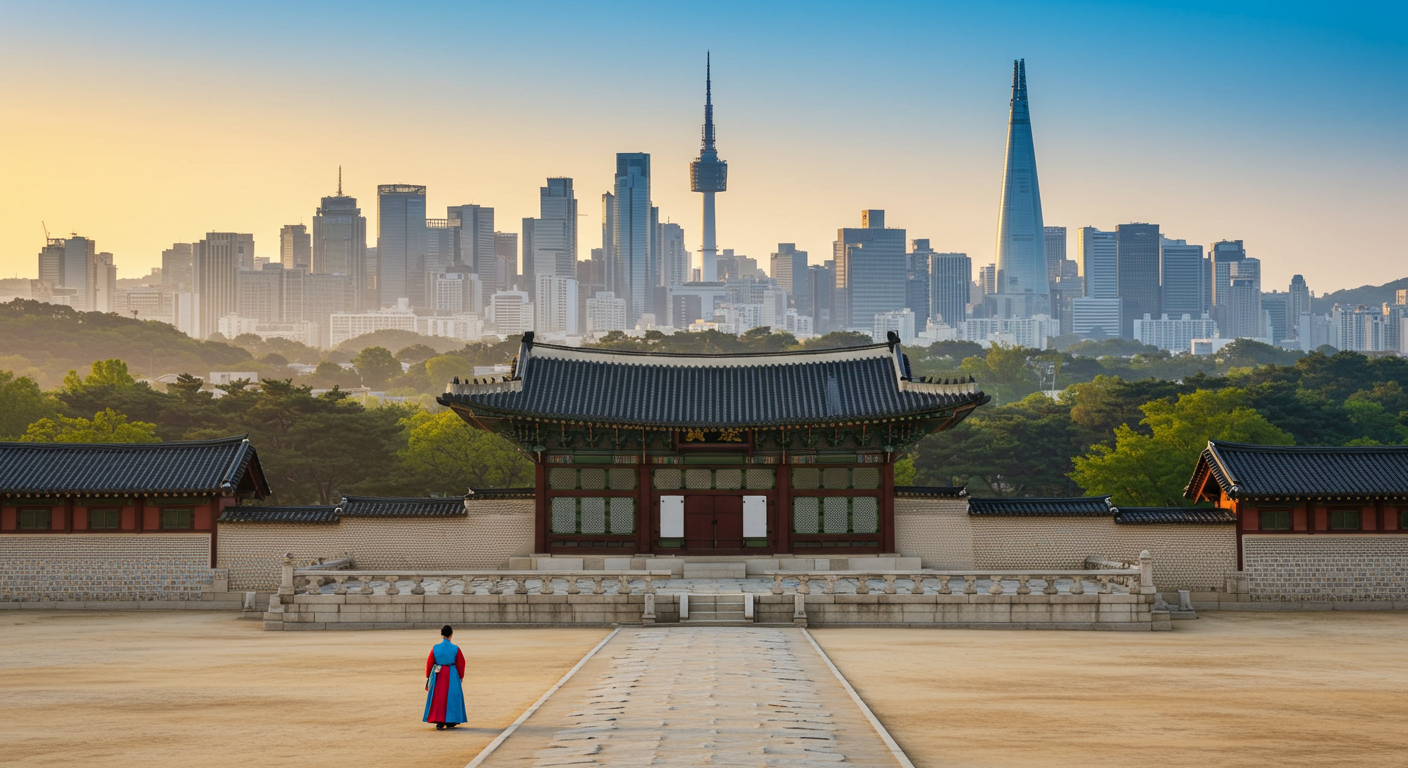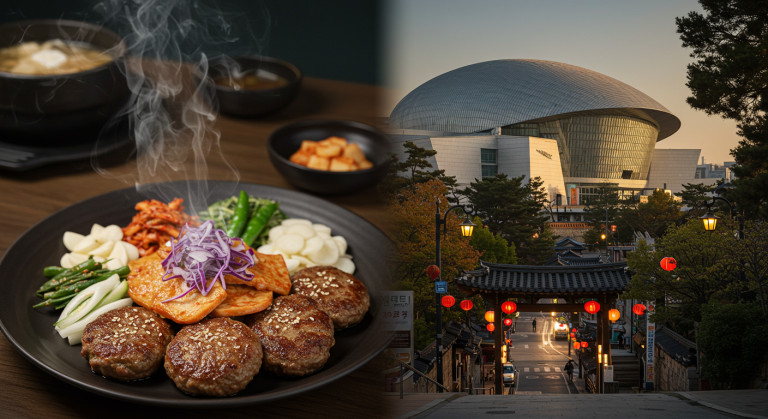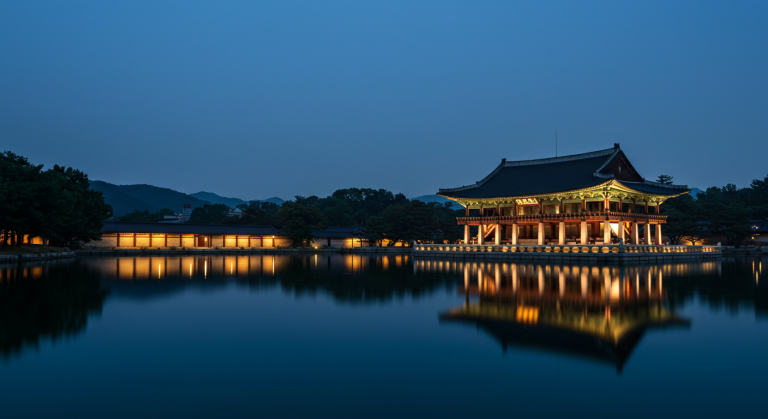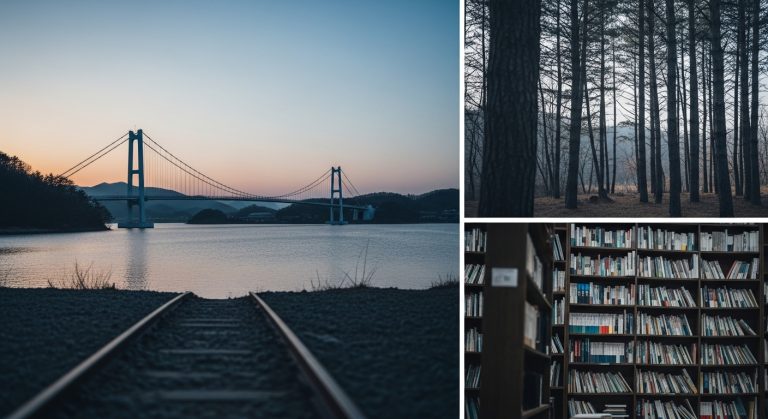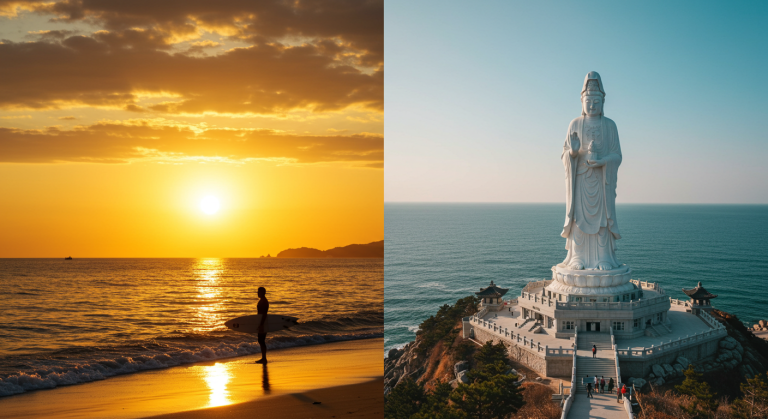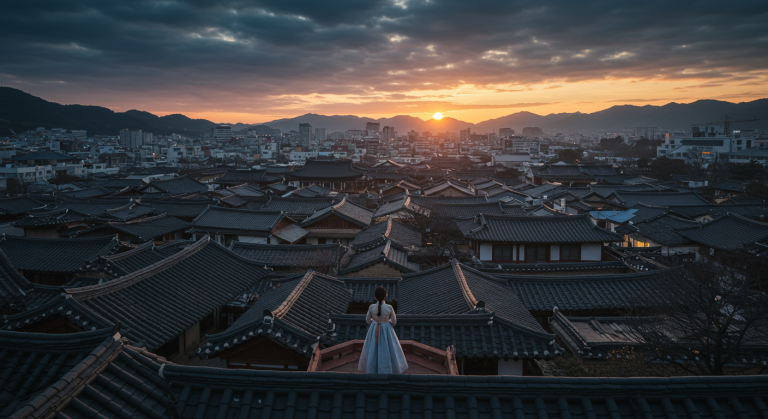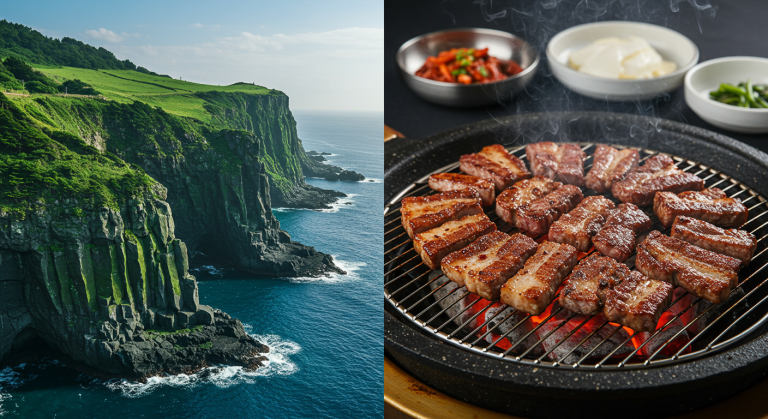The Perfect Balance: Blending History and Modernity in Your Seoul Adventure
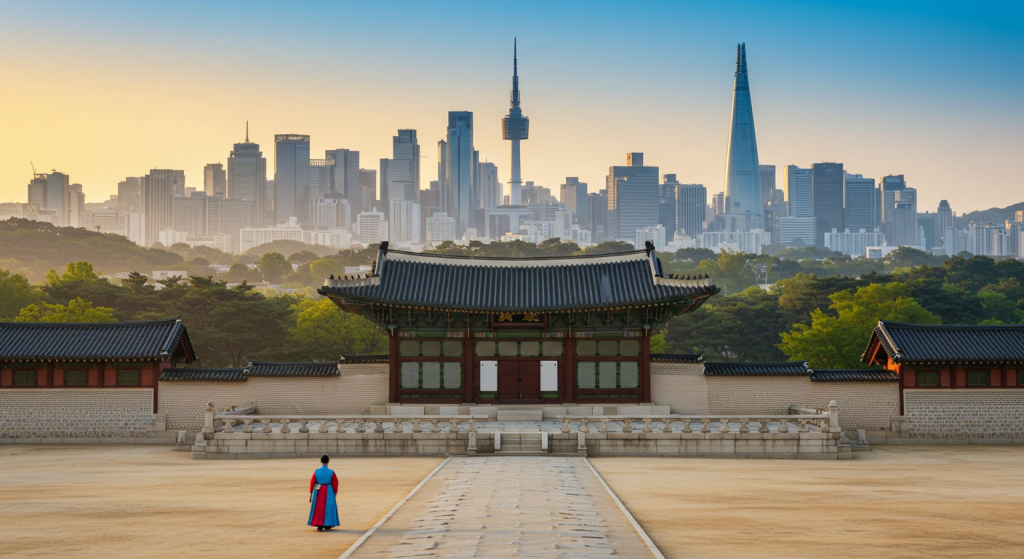
Feeling overwhelmed planning your first trip to Seoul? This guide cuts through the noise, helping you master the Seoul Metro, find the best food markets (Gwangjang, Myeongdong), and build your perfect itinerary covering ancient palaces (Gyeongbokgung), modern hotspots (Gangnam, Hongdae), and tranquil cultural villages (Bukchon Hanok Village). Stop worrying, start exploring!
Seoul Survival Guide: An Epic 10,000-Word Journey Through South Korea’s Heart 🇰🇷✈️
Oh, Seoul! Just the name conjures up images of dazzling neon signs, the rhythmic clang of the subway, the savory aroma of street food wafting through the air, and a captivating blend of ancient history meeting cutting-edge technology.
It’s a city of almost ten million stories, and if you’re planning your first visit, I totally get it—the sheer scale can be completely overwhelming! 🤔
Before my first trip, I spent weeks poring over maps, trying to figure out if I needed to learn Korean to survive or if Google Maps would actually work (Spoiler: it doesn’t really, but we’ll fix that!).
This guide is born from my own trial-and-error, a comprehensive blueprint designed to take you from confused tourist to confident Seoul explorer, ensuring you spend less time planning and more time eating delicious Tteokbokki. Get ready for the adventure of a lifetime! 🤩
1. Essential Pre-Trip Planning: The Non-Negotiables You Need to Master
Let’s face it: a seamless trip starts long before you board the plane. South Korea has a few unique quirks when it comes to travel logistics, and getting these sorted early will save you hours of panic and confusion when you land at Incheon International Airport (ICN).
I once saw a couple struggling at a subway ticket machine because they hadn’t downloaded a local map app, and trust me, you don’t want to be that person! Here’s the critical checklist.
1.1. Connectivity & Essential Apps: Your Digital Survival Kit
Renting a pocket Wi-Fi device is fine, but purchasing a Korean eSIM before you arrive is genuinely a game-changer for instant connectivity. It allows you to hit the ground running, instantly summoning Kakao T (the local Uber) or checking your Naver Map directions the moment you exit the plane. It’s cheap, reliable, and keeps your physical SIM slot free.
This is perhaps the single most important piece of advice: leave Google Maps at home. Due to local security restrictions, Google’s mapping data in Korea is severely limited, often failing to provide reliable walking directions or accurate public transport information.
You absolutely must replace it with the local alternatives if you want to navigate Seoul like a pro.
- Naver Map or Kakao Map: These are the indispensable, primary navigation tools. I personally prefer Naver Map because it often shows which subway exit to take and even which train car to board for the fastest transfer or exit—a lifesaver in Seoul’s massive stations.
- Papago (Naver Translator): Forget Google Translate for quick, natural conversation. Papago is designed specifically for Korean and other Asian languages and its translation quality is vastly superior, especially for complex phrases and scanning menus.
- Kakao T: This is the local version of a ride-hailing app, essential for calling a taxi when you can’t hail one, or if you prefer a pre-booked service. It’s usually reliable and integrated with Kakao Map.
- Subway Korea (Jihacheol): While Naver and Kakao map public transport well, this dedicated app is perfect for pure subway routing, checking transfer times, and saving your favorite station names.
1.2. The T-Money Card vs. The Discover Seoul Pass
Navigating Seoul’s public transport system is shockingly easy and affordable—once you have the right card.
The system is extensive, inexpensive, and incredibly efficient, making it the primary way you’ll get around the city. You need a transit card!
| Feature | T-Money Card (Essential) | Discover Seoul Pass (Optional Perk) |
|---|---|---|
| Primary Function | Universal public transport payment (subway, bus, taxi). | Free entry to 70+ attractions (Palaces, N Seoul Tower) + T-Money function. |
| Cost/Duration | Fixed card cost (~4,000 KRW), reloadable balance. | Time-limited pass (24h, 48h, 72h), higher initial cost. |
| Verdict | MUST-HAVE. You need this for daily survival. | WORTH IT only if you plan to visit 3-4 expensive attractions in a short timeframe. |
While credit cards are widely accepted for purchases in Seoul, many smaller convenience stores (where you might top up your T-Money) and street food vendors only accept cash (KRW). Always keep a minimum of 50,000 KRW in cash for these situations. You can top up your card at any subway station machine using a credit card, but the small convenience stores are cash-only for top-ups. Don’t get caught out!
2. The Perfect 5-Day Seoul Itinerary: History, Pop Culture, and Food
Seoul is massive, so the key to a stress-free trip is organizing your days geographically. I’ve structured this itinerary to group nearby neighborhoods and attractions, minimizing transit time and maximizing your exploration time.
This schedule hits all the major must-sees while leaving ample room for spontaneity and, most importantly, food breaks. Let’s dive into the history, the chaos, and the beauty! 🗺️
2.1. Day 1: Royal Grandeur & Traditional Charm (The North)
We’re starting with the classics—the heart of the Joseon Dynasty. This area is the perfect contrast to the city’s modernity, giving you that quintessential ‘old Korea’ experience right in the middle of the capital.
Trust me, seeing Gyeongbokgung Palace rise above the surrounding skyscrapers is a moment you won’t forget; it’s like stepping through a time machine!
-
Gyeongbokgung Palace & Changing of the Guard: Arrive by 9:30 AM to catch the mesmerizing ceremony at Gwanghwamun Gate. The palace itself is the largest and most beautiful of Seoul’s Five Grand Palaces.
Personal Anecdote: I highly recommend renting a Hanbok (traditional Korean dress) nearby; not only is it a fun photo opportunity, but you also get FREE entry into the palace! It’s the ultimate travel hack. -
Bukchon Hanok Village: Walk East from Gyeongbokgung to this stunning neighborhood of traditional Korean houses (Hanoks). This is a residential area, so remember to be quiet and respectful as you wander the famous “8 Views.”
Take a moment at the top of the hill to capture the iconic shot of the Hanok roofs contrasted against the modern city skyline—it’s pure photographic gold. -
Insadong & Ssamziegil: End your day in the cultural district, perfect for buying traditional Korean crafts, art, and souvenirs. Ssamziegil is a charming spiral shopping complex filled with unique artisanal shops and small galleries.
You should definitely stop at one of the traditional tea houses here to try a warm cup of *Sujeonggwa* (cinnamon punch) or a delicate flower tea.
While Gyeongbokgung is the main event, don’t overlook its neighbor, Changdeokgung Palace, and its famous Huwon (Secret Garden).
Access to the Secret Garden requires a separately timed and often pre-booked tour, so if you’re a nature lover, plan ahead for this serene and beautiful spot—it’s a UNESCO World Heritage site for a reason!
2.2. Day 2: Neon Lights, Shopping & Street Food Frenzy (Central)
Day two is for indulgence, consumerism, and eating until you can’t move. Myeongdong is Seoul’s commercial heart, a chaotic, dazzling, and intoxicating place that explodes with life from late afternoon until late at night.
I once got so distracted by the endless stream of free samples that I nearly missed my dinner reservation!
Start your day a bit slower and head to the Cheonggyecheon Stream, a peaceful 10km urban waterway where locals relax amidst the towering office buildings—it’s a wonderful contrast.
Then, brace yourself and head straight into the sensory overload that is Myeongdong.
The evening street food scene in Myeongdong is famous, but it’s often more expensive than markets like Gwangjang. My advice: Sample a few items, but save your serious appetite and budget for an authentic, traditional market experience like Namdaemun or Gwangjang, where the prices are lower and the authenticity is higher.
After Myeongdong, you can pivot to the futuristic architecture of the Dongdaemun Design Plaza (DDP), a silver, flowing structure that looks straight out of a sci-fi film.
This area is also famous for its massive 24-hour shopping malls, catering mostly to wholesale fashion, but offering an unbelievable experience even if you’re just browsing.
Seoul’s Top Traditional Market Showdown
| Market Name | Specialty | Vibe/Atmosphere |
|---|---|---|
| Gwangjang Market (광장시장) | Bindaetteok (Mung Bean Pancakes), Mayak Gimbap (Mini Rolls). | Iconic, crowded, and loud food hall; great for communal dining. |
| Namdaemun Market (남대문시장) | Clothing, kitchenware, souvenirs, and *Kalguksu* (Hand-cut noodles) Alley. | Largest traditional market; bustling, historical, and great for souvenirs. |
| Dongdaemun Market (동대문 시장) | Fashion, wholesale clothing, and textile shopping, particularly at night. | Modern indoor malls and late-night shopping; future-forward. |
2.3. Day 3: Hipster Vibes & Youth Culture (The West)
Time to jump into the trendy, youthful energy of Seoul’s university districts. Hongdae, Sinchon, and Ewha Woman’s University are the epicenters of K-pop street performance, indie fashion, and quirky cafe culture.
This is where you’ll find the beating heart of Korean youth—the creativity and energy here are simply unmatched.
The main hub is Hongdae (Hongik University Area), famous for its weekend busking sessions, street performers, and independent fashion boutiques. You could spend hours just people-watching here, and the atmosphere in the evenings, with music spilling out of bars and clubs, is electric.
The area is also a haven for unique and themed cafes, from cute animal cafes to ones dedicated to famous K-pop groups. I stumbled upon a ‘dungeon-themed’ coffee shop once—only in Seoul!
Take a short subway ride to Ewha Womans University to admire its stunning, modern campus architecture—a masterpiece designed by French architect Dominique Perrault.
The shopping street leading up to the campus gate is an excellent place to find affordable, trendy clothing and unique beauty products favored by Korean students, often at bargain prices.
Hongdae is full of these: Life Four Cuts or Photo Signature. They’re cheap, fun, and provide the most authentic, hilarious souvenir of your trip. Grab some silly props and strike a pose—it’s a beloved Korean pastime!
2.4. Day 4: Modern Seoul & Luxury Living (The South – Gangnam)
Now we cross the mighty Han River to explore the famous “South of the River,” or Gangnam. Yes, this is the district Psy sang about—a symbol of modern Korean wealth, luxury, plastic surgery clinics, and sleek, high-rise office buildings.
It’s a stark contrast to the historical areas up north, showcasing Korea’s incredible economic rise.
Start at the Starfield COEX Mall, an enormous underground complex. The true highlight here is the Starfield Library, an architectural wonder with three massive, towering bookshelves that has become an Instagram icon.
It’s not just a photo op, though—it’s a genuinely impressive public space that symbolizes the importance of education and culture in Korean society.
Just across from the COEX, you’ll find the serene Bongeunsa Temple, a large, beautiful Buddhist temple complex that provides a peaceful escape from Gangnam’s hustle.
It’s unbelievable to find such ancient tranquility right in the middle of a modern metropolis; the juxtaposition is absolutely stunning.
For the evening, head to Sinsa-dong’s Garosu-gil, a charming, tree-lined street known for its high-end boutiques, chic cafes, and art galleries.
This is a great place for people-watching, finding trendy local designer items, and having a fancy dinner—it’s the epitome of Seoul’s understated luxury.
2.5. Day 5: Scenic Views & Reflection (The Heights)
On day five, let’s gain some perspective. This day is dedicated to honoring history and taking in the breathtaking views that truly capture the immense scale of Seoul.
It’s a day for reflection, exercise, and amazing sunset photos that will make all your friends jealous.
Start your day at the somber but essential War Memorial of Korea. This massive museum offers a comprehensive, moving, and unbiased look at the history of the Korean War and the country’s journey to the modern day.
It’s a deeply educational experience and crucial to understanding the country’s psyche. Plan to spend a minimum of two hours here—it’s truly vast.
In the late afternoon, make your way to Namsan Park, the location of the iconic N Seoul Tower. You can hike up through the park, or take the Namsan Cable Car for an easier journey.
The N Seoul Tower observatory provides a stunning 360-degree panoramic view of the entire city, which is especially magical around sunset when the millions of city lights begin to twinkle on—don’t forget your camera!
If you want a view with fewer crowds, consider the Seoul Sky Observatory in the Lotte World Tower (Jamsil), which is the world’s third-tallest building, offering a thrilling, glass-floor experience. Alternatively, hike the ancient Seoul City Wall Trail near Naksan Park for fantastic, historic views of the Jongno area, perfect for a quieter evening.
3. Navigating the City: Seoul’s World-Class Public Transport Decoded
Seoul’s transportation system is honestly one of the best in the world. It’s cleaner, more efficient, and often faster than any taxi, especially during rush hour.
However, the sheer size of the network—over 20 lines and hundreds of stations—can feel like trying to solve a complicated puzzle at first glance. I promise you, once you understand the core mechanics, you’ll love it!
3.1. Subway Mastery: The Colors and the Transfers
The Seoul subway system is color-coded, and that is your biggest friend! Line 1 is dark blue, Line 2 is green, Line 3 is orange, and so on. Always remember the color and the number of your line.
Ticket gates are used both for entry and exit, so remember to tap your T-Money card both ways—this is how the system calculates your distance-based fare and applies transfer discounts.
A crucial feature is the *transfer discount* (Hwanseung). You can transfer between the subway and most city buses for free (or at a greatly reduced fare) within a 30-minute window (longer at night).
This means you can get off the train, grab a bus to your final destination, and only pay one total fare, provided you tap your card correctly every time you enter and exit a mode of transport!
3.2. Airport Rail Express (AREX) Calculator
Your first major transit decision will be getting from Incheon International Airport (ICN) to the city center (Seoul Station). You have two main options with the AREX train: Express or All-Stop.
Which one you choose depends entirely on your budget, final destination, and desire for speed.
Enter your estimated cost for one person on the Express Train (e.g., 9,500 KRW) to compare options.
4. The Foodie’s Ultimate Guide: What (and Where) to Eat Until You Drop
Honestly, you could come to Seoul just for the food, and it would be a five-star trip. Korean cuisine is all about intense flavor, communal dining, and an incredible array of side dishes (Banchan) that make every meal an event.
As a self-proclaimed K-food fanatic, I’ve compiled my absolute must-eat list, from sizzling BBQ to comforting street snacks. You’ll need bigger pants. You’ve been warned! 🤤
4.1. The Holy Trinity of Korean Dining
- Korean BBQ (K-BBQ): This is non-negotiable. While Samgyeopsal (pork belly) is the classic, try Galbi (marinated short ribs). For a truly premium experience, look for a restaurant specializing in Hanwoo (premium Korean beef)—it melts in your mouth and is worth the splurge.
- Bibimbap & Kimbap: Bibimbap (mixed rice with vegetables, meat, and chili paste) is the perfect introduction to the cuisine. For an on-the-go snack or light lunch, grab Kimbap (seaweed rice rolls), which are miles better and fresher than any mass-produced sushi.
- Noodle Bowls (Noodle Soup): Depending on the weather, seek out a hearty bowl of Kalguksu (hand-cut noodle soup) in Namdaemun, or the fiery kick of Jajangmyeon (black bean sauce noodles)—the latter is technically Korean-Chinese, but a national obsession.
4.2. Street Food Staples: Eat Your Way Through Seoul
Korean street food is an art form. It’s cheap, fast, and unbelievably satisfying, and you’ll find the best concentration in Myeongdong (tourist-friendly) and Gwangjang Market (authentic).
Make sure you have cash in hand and don’t be shy—point, smile, and enjoy the show as they prepare your snack!
Chewy rice cakes simmered in a sweet and fiery gochujang sauce. A Korean soul food icon.
🌶️ Must-Try Spot: Sindang-dong Tteokbokki TownA fried, fluffy dough pocket filled with brown sugar, cinnamon, and seeds. Perfect winter treat!
🍯 Must-Try Spot: Namdaemun MarketFish cakes boiled in a savory broth, served on skewers with a cup of the hot broth. Ultimate comfort food.
🍢 Must-Try Spot: Myeongdong Street Food Alley5. Your Seoul Budget Breakdown: An Interactive Daily Cost Calculator
Seoul can be as budget-friendly or as luxurious as you want it to be. The subway is cheap, but a dinner in Gangnam can quickly eat up your daily budget.
To help you plan your spending, here is a simple interactive calculator. Enter your preferences, and it will give you a rough estimate of your daily expenses in Korean Won (KRW), excluding shopping.
*This estimate excludes major shopping sprees, flights, and the initial T-Money card purchase/top-up. Exchange rates vary.
Seoul Travel Key Takeaways (The Quick Recap)
1. Navigation is Local: DO NOT rely on Google Maps. Download Naver Map or Kakao Map immediately. Use Papago for translations.
2. Transit is King: Buy a T-Money Card at the airport and keep it topped up with cash for smooth, discounted travel on the subway, bus, and even taxis.
3. Experience the Contrast: Group your itinerary to easily contrast the history of Jongno/Jong-gu (Palaces, Hanoks) with the modernity of Gangnam (Lotte, COEX) and the youthful energy of Hongdae.
4. Prioritize Food Markets: While Myeongdong has great street snacks, head to Gwangjang Market for the most authentic and famous traditional street food experience.
Seoul is truly a city of unparalleled dynamism, where ancient traditions happily coexist with hyper-modern culture, often on the very same street corner.
I hope this guide gives you the confidence to dive in headfirst, knowing you have all the essential tools and a structured plan to make the most of your time there.
Don’t be afraid to wander off the beaten path, grab a spicy cup of Tteokbokki from a vendor with a long line, or simply enjoy a quiet moment admiring the Han River.
The magic of Seoul is that it invites you to create your own unique, unforgettable story. Happy travels, and enjoy every incredible, neon-drenched minute of it! Annyeong! 👋
